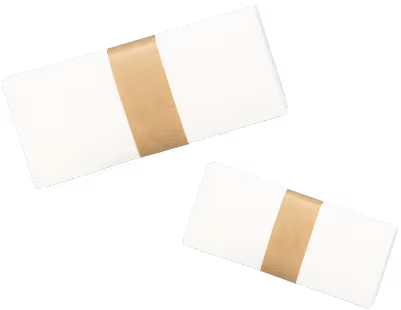
Laundry 101: Should you Wash Whites and Colors Separately?
Author: Kate Amore
When I was growing up, my mother always told me to separate my white clothing from my color clothing. However, I stopped doing that when I went to college because I didn’t want to pay to use the dorm laundry machine twice! To my surprise, my clothes turned out ok, so I wondered, does it actually matter whether you separate laundry colors?
Why should you separate clothes?
For many years, we’ve been told to sort whites and colors and wash separately. The reasoning is straightforward: whites, particularly cottons and linens, usually get washed in hot water to keep them bright. Colors are typically washed in cold water to prevent fading. Mixing the two can lead to color bleeding—like when a red sock turns a white shirt pink.
But do you NEED to separate clothes?
The original advice about separating clothes was before modern washing machines. I would argue that it’s not always necessary to separate clothes. HeySunday laundry sheets and today’s washing machines are designed to handle mixed loads better than ever before. I guess my mother was used to washing clothes in a machine made in the 80s! I’ve never had an issue mixing my clothes in a modern laundry machine.
There are a few tips to stick to when you mix loads. First, stick to cold water - it's safest for most fabrics and colors. Not sure if something will bleed? Try the wet tissue test: dampen a white paper towel and rub it on a hidden seam. If the color transfers, that item needs its own wash cycle.
When should you always separate laundry?
There are still a few times when separating is non-negotiable. New colored clothes (especially jeans and red items) are notorious for bleeding in their first few washes. That expensive white button-down for work? Better safe than sorry - wash it with other whites. And if you're planning to use bleach on any of your whites, those need their own load,.
There are a few other clothing combos that should be separated: delicate silk blouses with rough denim, heavy towels with lightweight t-shirts, or anything with metal hardware that could snag other clothes. And while we're talking about what not to mix - keep those gym clothes separate from your regular laundry. Trust me on this one!
Color Catchers
If you're still worried about potential color transfer, you can use color catcher sheets. These products are designed to absorb loose dyes during the wash cycle, which helps prevent colors from bleeding onto whites. Color catchers can give you peace of mind if you’re worried about color transfer.
Eco-Friendly Considerations
From an environmental perspective, combining loads saves water and energy. The less often you run your washing machine, the better it is for the planet. If you can safely mix whites and colors, it might be a good choice for both your schedule and the environment. It’s also wallet-friendly if you wash your clothes at a laundromat.
Conclusion
Whether or not you decide to separate whites from colors is a personal choice. If you’ve had issues with color transfer in the past, sticking to tradition might be the safer option. But if you’re comfortable experimenting and using modern products, give it a try on clothes that have been washed many times before.














“My sheets have never felt cleaner. I’m hooked.”
“Finally — detergent that actually works and doesn’t take up half the shelf.”
“Hey Sunday WORKS. Great for stains, and no buildup in the washer.”
“We switched from liquid. The scent is amazing and it saves us money.”
“I’ve got total control with HeySunday. I’ll never go back to powder.”